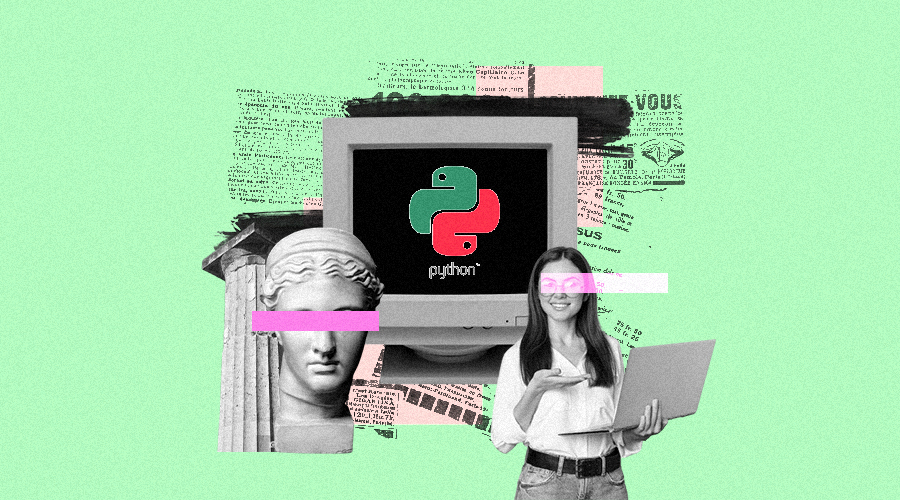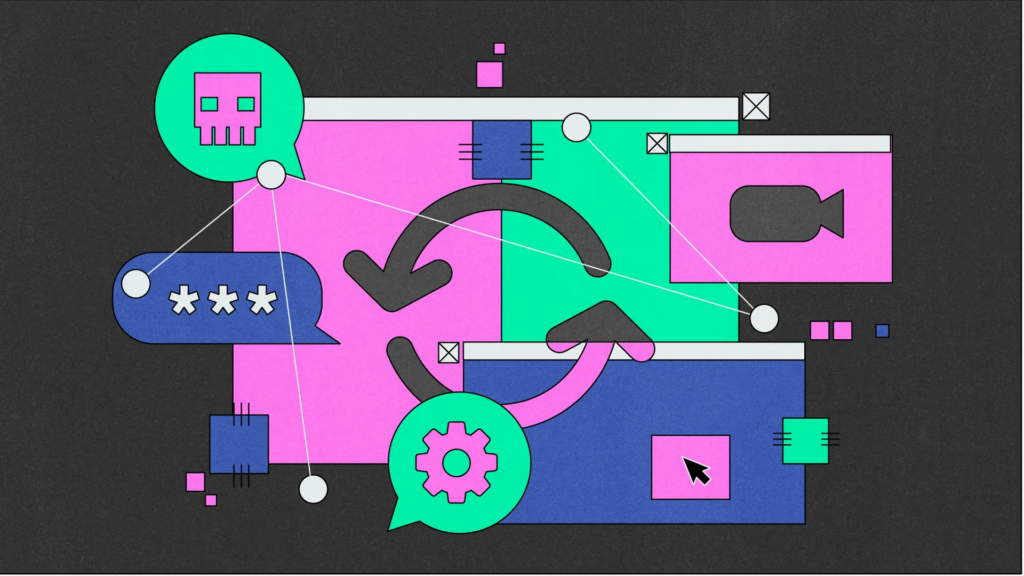Python is one of the most widely used programming languages in the field of artificial intelligence. Its simplicity, ease of use, and large number of libraries make it a popular choice for AI development. Here are some of the roles Python plays in AI:
Data analysis and preprocessing: Python offers several powerful libraries, such as Pandas, NumPy, and SciPy, which can be used for data analysis and preprocessing. These libraries provide powerful tools for working with large data sets and performing complex calculations.
Machine learning: Python offers several libraries such as Scikit-learn, TensorFlow, Keras, and PyTorch which provide a complete framework for building machine learning models. These libraries allow developers to easily build and train models for various tasks such as image classification, natural language processing, and speech recognition.
Natural language processing: Python offers several libraries such as NLTK (Natural Language Toolkit) and Spacy, which provide powerful tools for natural language processing. These libraries can be used to build applications that can analyze, understand, and generate human language.
Computer vision: Python offers several libraries such as OpenCV, scikit-image, and PIL (Python Imaging Library) which provide tools for building computer vision applications. These libraries can be used to build applications that can recognize objects in images, track motion, and perform other complex tasks.
Python’s flexibility, ease of use, and vast ecosystem of libraries and tools make it an excellent choice for building AI applications.
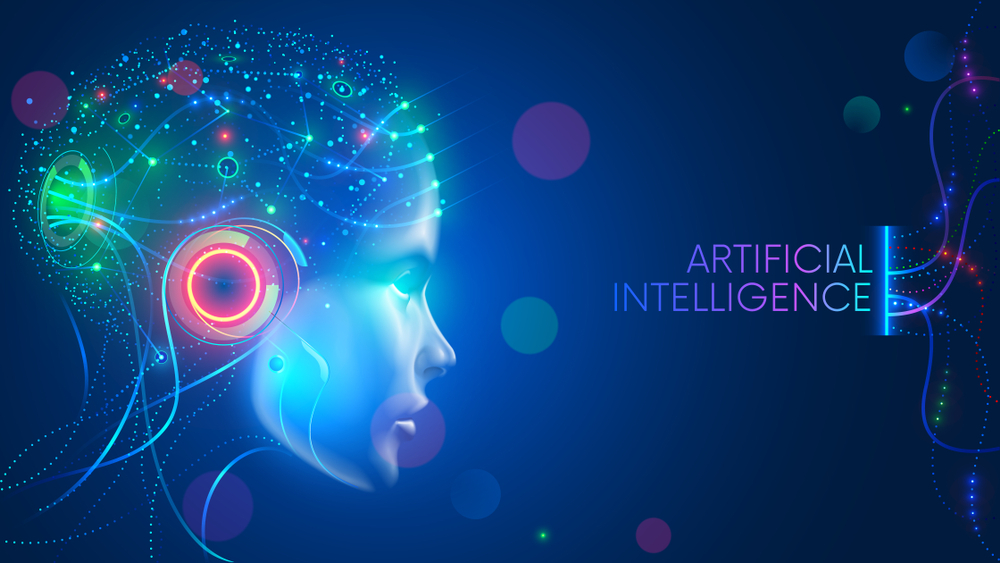
We will discuss the role of Python in artificial intelligence and look at the reasons why
Python is such a popular programming language in the field of artificial intelligence (AI).
Simplicity and ease of use: Python is a simple and easy-to-learn programming language, with a syntax that is straightforward and intuitive. It is also a high-level language, which means that developers can focus on the problem they are trying to solve, rather than getting bogged down in low-level details.
Large and growing ecosystem: Python has a vast ecosystem of libraries and tools that make it easy to build AI applications. For example, libraries such as NumPy, Pandas, and Scikit-learn provide powerful tools for data analysis and machine learning. TensorFlow and PyTorch are popular libraries for building neural networks, while NLTK and Spacy are widely used for natural language processing.
Open-source and community-driven: Python is an open-source language, which means that anyone can use, modify, and distribute it. This has led to a large and active community of developers who contribute to the language, libraries, and tools. This community has created a wealth of resources, including tutorials, code examples, and documentation, making it easy for new developers to get started with Python in Artificial Intelligence.
Interoperability: Python can easily be integrated with other programming languages and tools, making it a versatile choice for building AI applications. For example, Python can be used with Java through the Java Virtual Machine (JVM) or with C++ through Python/C++ bindings.
Performance and scalability: While Python is not as fast as lower-level languages like C or C++, it is still a relatively fast language. Additionally, Python’s ability to leverage multiple cores and distributed computing frameworks like Apache Spark makes it scalable for processing large data sets.
Python’s simplicity, large ecosystem, open-source nature, interoperability, and performance make it an excellent choice for building AI applications. These advantages have led to Python becoming the most widely used language in the field of AI, with many large companies such as Google, Facebook, and Amazon relying heavily on Python for their AI projects.
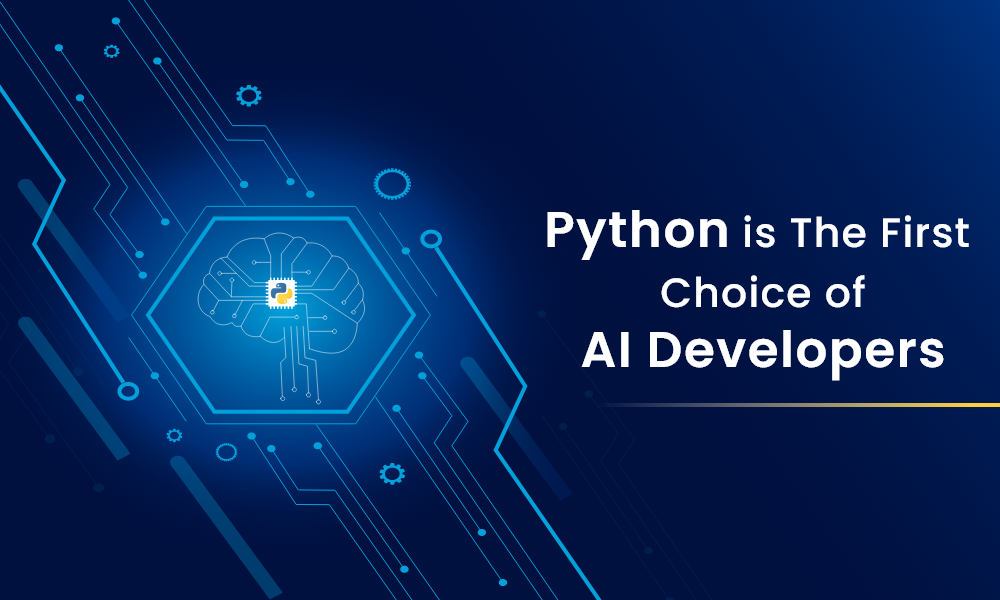
Features and Advantages
Here are some of the key features and advantages of Python in the context of artificial intelligence:
Features:
- Simple and easy-to-learn syntax: Python’s syntax is easy to understand and learn, making it accessible to beginners.
- Large ecosystem of libraries and tools: Python has a vast collection of libraries and tools for various tasks in AI, such as data analysis, machine learning, and natural language processing.
- Open-source and community-driven: Python is an open-source language, and its community is actively developing new libraries and tools, making it a continually evolving language.
- Interoperability: Python can easily integrate with other languages and tools, allowing developers to use it in conjunction with other languages.
- Versatility: Python is a versatile language that can be used for a wide range of applications, not just AI.
Advantages:
- Rapid development: Python’s simple syntax and vast library ecosystem make it easy for developers to build AI applications quickly.
- Scalability: Python’s ability to leverage multiple cores and distributed computing frameworks like Apache Spark makes it scalable for processing large data sets.
- Accessibility: Python’s easy-to-learn syntax and vast library ecosystem make it accessible to a wide range of developers, including beginners.
- Flexibility: Python is a flexible language that can be used for a wide range of AI applications, from data analysis to natural language processing to computer vision.
- Community support: Python has a large and active community of developers who contribute to the language, libraries, and tools, providing developers with a wealth of resources and support.
Python’s features and advantages make it an excellent choice for building AI applications. Its simplicity, versatility, and scalability, combined with its vast library ecosystem and community support, have made it the go-to language for many developers in the field of AI.
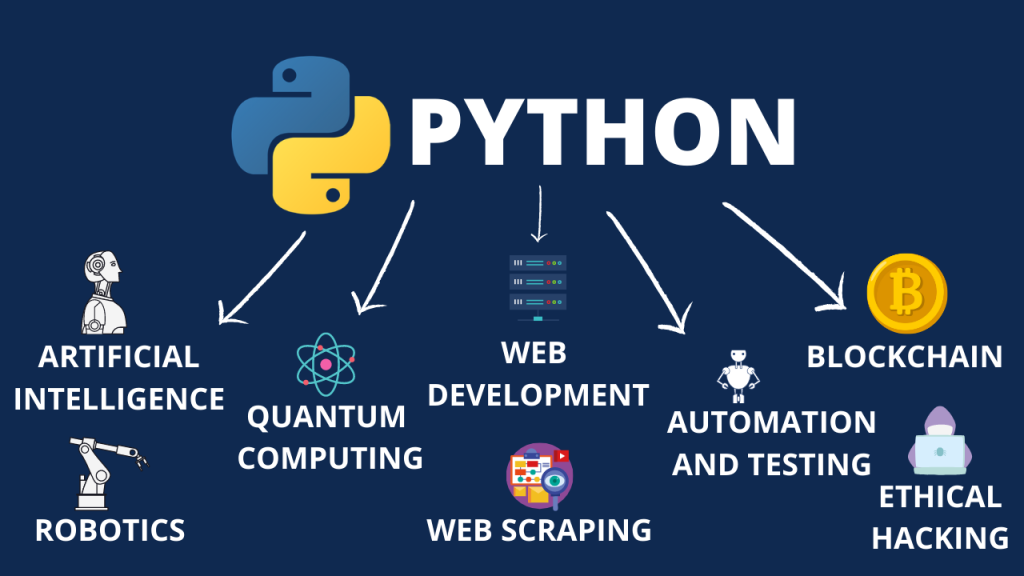
Why Python in Artificial Intelligence?
Python has become one of the most popular programming languages in the field of artificial intelligence for several reasons:
- Simple and Easy-to-learn Syntax: Python’s syntax is simple and easy to understand, which makes it accessible to beginners who are just starting to learn programming. It has an intuitive and straightforward syntax that is easy to read and write, which is especially useful when dealing with complex algorithms.
- Large Ecosystem of Libraries and Tools: Python has a vast collection of libraries and tools that are specifically designed for AI tasks such as data analysis, machine learning, and natural language processing. These libraries and tools make it easier for developers to build AI applications quickly and efficiently.
- Open-Source and Community-Driven: Python is an open-source language, which means that anyone can use, modify, and distribute it. This has led to a large and active community of developers who contribute to the language, libraries, and tools, making it a continually evolving language.
- Interoperability: Python can easily integrate with other programming languages and tools, making it a versatile choice for building AI applications. For example, Python can be used with Java through the Java Virtual Machine (JVM) or with C++ through Python/C++ bindings.
- Versatility: Python is a versatile language that can be used for a wide range of AI applications, not just in data analysis and machine learning. It can also be used for natural language processing, computer vision, and robotics.
- Performance and Scalability: While Python is not as fast as lower-level languages like C or C++, it is still a relatively fast language. Additionally, Python’s ability to leverage multiple cores and distributed computing frameworks like Apache Spark makes it scalable for processing large data sets.
Python’s simplicity, large ecosystem of libraries and tools, open-source nature, interoperability, versatility, and performance make it an excellent choice for building AI applications. These advantages have led to Python becoming the most widely used language in the field of AI, with many large companies such as Google, Facebook, and Amazon relying heavily on Python for their AI projects.
Top 10 Generic Python in Artificial Intelligence Libraries
There are many Python libraries available for building and implementing artificial intelligence algorithms and applications. Here are some of the most commonly used libraries from Python in Artificial Intelligence:
- NumPy: NumPy is a fundamental library for scientific computing in Python. It provides support for arrays and matrices, along with mathematical functions to manipulate them.
- Pandas: Pandas is a library for data manipulation and analysis. It provides support for data structures like data frames and series, along with functions for data cleaning, filtering, and transformation.
- Scikit-learn: Scikit-learn is a machine learning library that provides algorithms for supervised and unsupervised learning, including regression, clustering, and classification.
- TensorFlow: TensorFlow is a popular library for building and training deep neural networks. It provides support for both CPU and GPU computation and is widely used in industry and academia.
- Keras: Keras is a high-level neural network library that provides an easy-to-use interface for building and training deep learning models. It can run on top of TensorFlow, Theano, or CNTK.
- PyTorch: PyTorch is another popular library for deep learning. It provides dynamic computational graphs, which make it easy to build and modify neural network models.
- OpenCV: OpenCV is a library for computer vision and image processing. It provides functions for image and video processing, object detection, feature detection, and more.
- NLTK: NLTK is a natural language processing library that provides functions for tokenization, stemming, parsing, and sentiment analysis.
- Gensim: Gensim is a library for topic modeling and document similarity analysis. It provides support for algorithms like Latent Dirichlet Allocation (LDA) and Latent Semantic Analysis (LSA).
- Matplotlib: Matplotlib is a library for data visualization in Python. It provides functions for creating plots, histograms, scatterplots, and more.
These libraries are just a few examples of the many Python libraries available for artificial intelligence. Depending on the specific AI application, there may be other libraries that are more suitable.
Also Read : ChatGPT: Everything you need to know about the AI-powered chatbot & Check out the Latest articles from our Blog

